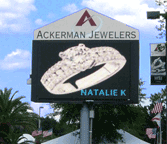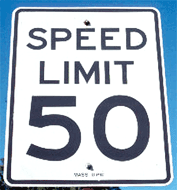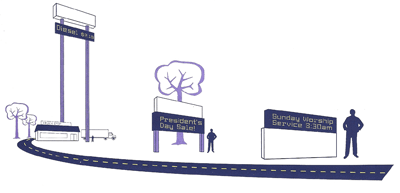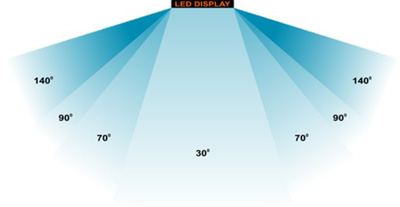What you need to know before you purchasing LED Displays?
LED Sign Basics
We can see LED display everywhere,but what is the determined factor for its price,do you think of ot before youbuying one? there are 3 industry terms for LED signs you need to understand.
- Pixel
- Pitch
- Matrix
The individual LEDs are are grouped together in what is known as a 'pixel'. The number of LEDs in each pixel varies. There could be one LED or there could be 25 LEDs in one pixel.
The major factor which determines the number of LEDs in a pixel is the 'pitch' of the pixels in the LED sign. The pitch is the distance from the center of one pixel to the center of the next pixel. The pitch determines how crisp the image will be.
If there are 2 LED signs sitting side by side and each one is the same height and width but they have different pitches, the LED sign with the smaller, tighter pitch, will have more pixels and thus a better resolution.
Selecting the right pitch when you are purchasing an LED sign may save you money as well as getting you the appropriate resolution for your particular application so make sure you read the section on choosing the right size LED sign.

The third term is 'matrix'. The matrix is made up of the number of pixel high and the number of pixels wide of an LED sign is. The matrix is what determines the physical size of the sign. If an LED sign is 24 pixels tall and 96 pixels wide, the matrix is 24x96.
With monochrome led signs and with an indoor led sign, the matrix determines how many lines of text you can put on the sign as well as how many characters will fit on each line. With programmable color LED signs the matrix determines how much total space you have. A quick word or caution, having the correct height to width ratio is CRITICAL in color LED signs, you should always consult an LED sign professional for help determining the best matrix for a color LED sign.
So to sum it up...
- Groups of LEDs make Pixels
- The distance between pixels, the pitch, determines the resolution
- The number of vertical and horizontal pixels determines the matrix which determines the number of lines in the sign and the number of charcters per line.
Color or Monochrome?
The first question you need to ask yourself is do I need a color LED sign or Outdoor Electronic Monochrome LED Displays. Most sign salesmen will tell you that a color LED sign is more effective. I'm not one of those guys. Color can be more effective for some applications but not all applications. The only thing you can say about color LED Displays that is true for every application is that it is more expensive than monochrome LED signs.
So how do you know if the additional cost is justified? Ask yourself this question: "Can my product or service be sold with a picture?".


If you sell insurance there are probably no pictures that will help you sell your product, words will sell your product.
If you sell cars you can definately sell your product with pictures.
If you answered "No" then properly sized Monochrome Electronic LED Signs are probably the way to go. A properly sized monochrome LED sign is just as, if not more, effective as a color LED sign if picures and video are not helpful. You will also save a bundle in aquiring the sign.
If you answered yes, you should consider a color LED sign. They do cost more but if images can help you sell, the additional cost might be justified. Talk to an LED sign professional for help determining if a color LED sign is the way to go.
How big should my LED display be?
Properly answering this requires a careful review of the location for the sign as well as the specific application. If you talk to a sign salesperson who does not inspect your property and ask questions about your application, be very wary, they are probably more interested in making a sale than in making sure you get the right LED sign.

There are several factors that must be considered. For instance:
- Speed Limit of Traffic
- Lanes of Traffic
- Stop signs or Stop lights
- Viewing Distance
- Sign Height/Elevation
- Content
And the list goes on.
Of all the items listed above, content is the most involved. If you are getting a monochrome LED sign you need to know what you want to say AND the most effective way to say it. Then you must consider the traffic patterns. The speed limit and viewing distance will affect the the viewing time. Your towns sign ordinance can also have an impact here.
Once you have all that information (actually you need more information than that but those are the basics) you can determine your matrix (scroll back up for a review of what the matrix is).
Now you need to determine the correct pitch. A smaller/tighter pitch will make the minimum character size smaller.

So, if your LED sign will be viewed from a long distance by people in cars travelling 45mph you will need a larger character size to make sure the traffic can read it. That means you will need a larger pitch.
If your sign will be close to the traffic and the speed limit is 25mph you can use a small character size, and smaller pitch, and your message will still be readable.
Determining the matrix and the pitch is even more complicated if you are getting a color LED sign because you must carefully consider the application as well as the aspect ratio.
As a rule of thumb, with color LED Displays, the smaller the matrix and the larger the pitch, the grainier the picture on the LED sign will be.
Viewing distance also plays a role in how high of a resolution you need. If the LED sign will be viewed from a long distance you do not need as much fine detail. The closer the viewer is to the LED sign, the more detail you need. You must carefully consider what kind of content you will putting on the LED sign and the viewing distance.

If all of this seems complicated and possibly a bit overwhelming, don't worry, that is what we are here for. We have a process for going over all the details of your location and application. Then, and only then, we will make a recommendation to you.
Remember, if your LED sign is too big, you wasted money. If your LED Display is too small, you wasted money. Only a properly sized LED sign will give you the most bang for your buck (also known as the best ROI).
Things to watch out for when purchasing an LED sign
The true cost of an LED Display is in the number of individual LEDs in the sign. The size of the box housing the LEDs isn't really important when it comes to pricing, in fact, that box is relatively inexpensive. The circuit boards which control the LED sign aren't the key factor in pricing, like the box they are relatively inexpensive. The key factor is the number of LEDs in the sign.
If you are considering acquiring an LED sign that is 32 pixels high and 96 pixels long and you are looking at two different brands which appear to be almost identical, even the pricing is close, which LED sign is the better bargain? There is one key piece of information you need to start to answer that question: How many LEDs are in each pixel?
Remember, pixels are groups or clusters of individual LEDs. The LED sign in this example has 3072 PIXELS (32 pixels high x 96 pixels wide). If one brand has 8 LEDs in each pixel than you are getting 24,576 LEDs. If the other brand only has 4 LEDs per pixel you are getting 12,288 LEDs.
LED density is a good indicator for comparing LED display performance. Just like your car's engine, more cylinders generally mean more power. More LEDs per pixel generally mean higher brightness and better performance. A low brightness, unreadable LED display will not help you increase your sales because it's less likely your customers will notice and read what you have to say.
The answer is probably getting pretty clear. More LEDs equals more brightness, more clarity, more attention, more customers.
The number of LEDs per pixel is also important because of degradation. Generally speaking, an LED diode will lose about 20% of its initial brightness after the first 2000 hours of use (about 3 months). After that, the LED's brightness degrades very slowly until it dies at the estimated lifetime of 100,000 hours (about 11 years). When shopping for an LED sign, it is important to keep in mind that the manufacturer's claimed display brightness will drop about 20% after 2 to 3 months of operation.
Another consideration is the viewing angle of the sign. LEDs can put out a single, narrow beam of light like a flashlight, or they can put out a wide beam across a room like a light bulb. LEDs put out about the same amount of light no matter what type they are - but the "high-beam" LEDs with a narrow angle focus more light into one small spot, whereas the "wide angle" LEDs spread their light across the horizon. So, if you were to stand in front of a sign made from "high-beam" LEDs with narrow viewing angles, you would see an extremely bright sign, as long as you stood directly in front of it, but the minute you walked away from the front of the sign, where the "high beam" is focused, you would see nothing but black.
With wide viewing angle LEDs, the image is visible in consistent brightness and uniform colors throughout the entire viewing range of the display. A quality LED sign will have 140� of viewing angle which maintains the highest color accuracy and extends reading times.
There are 3 ways to build LED signs.
The first is to solder the LEDs directly to the circuits boards AND put a plexiglass face over the LED sign face to weatherproof it. There are several drawbacks to this method. First the plexiglass shield will cause glare from the sun which will make your sign harder to read during the day. Second, beacuse the LEDs are soldered to the circuit board. If one LED goes out you sign has to be turned off, opened up, and an entire board must be replaced. This will cause a quilting effect in your sign where one section is brighter then the surrounding areas.
The second, and next best method, is to solder the LEDs directly to the circuit board but seal the entire face of the sign, without a plexiglass face shield. This eliminates the sun glare problem but it still has all the other drawbacks of the first method.
The third, and best, method is to use individually sealed pixels. With this method each pixel can be removed individually without turning off and opening the sign. This eliminates all the drawbacks of the other two methods.
Your biggest hurdle in buying an LED sign
The biggest thing to watch out for is sign sales people. I am not saying they are dishonest, most of them are very honest, hard working people. Most of them also lack the experience and/or knowledge to properly size and program an LED sign. They are expert tradesmen who really know how to build and install signs but LED signs have special issues that require special expertise.
Make sure that whoever you are dealing with is an expert at properly sizing and programming LED signs.
If they do not take the time to roll up their sleeves and really dig into your application and circumstances you need to be very wary of them. An LED sign is not a one size fits all, one phone call, purchase. They require careful planning and consideration. Do yourself a favor and talk to a professional.
